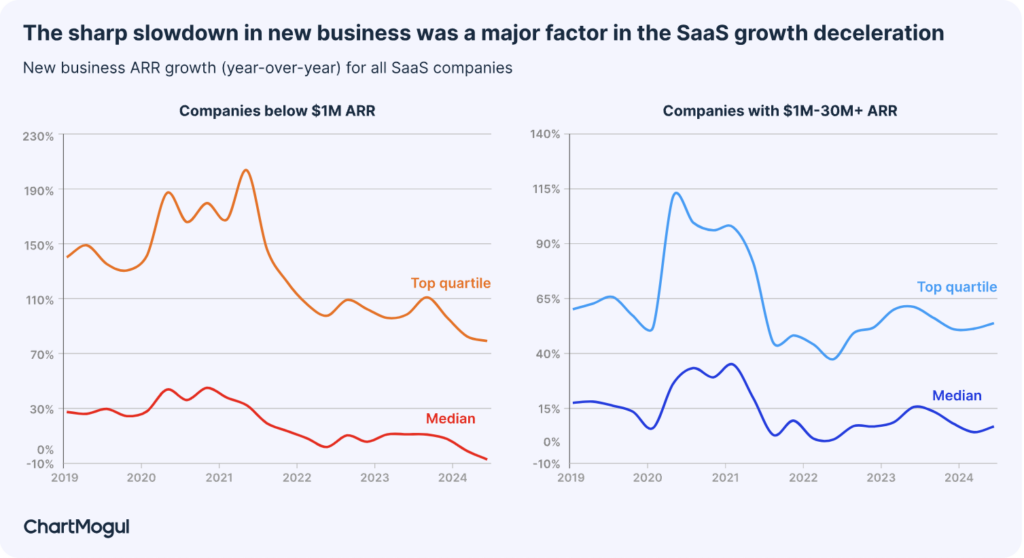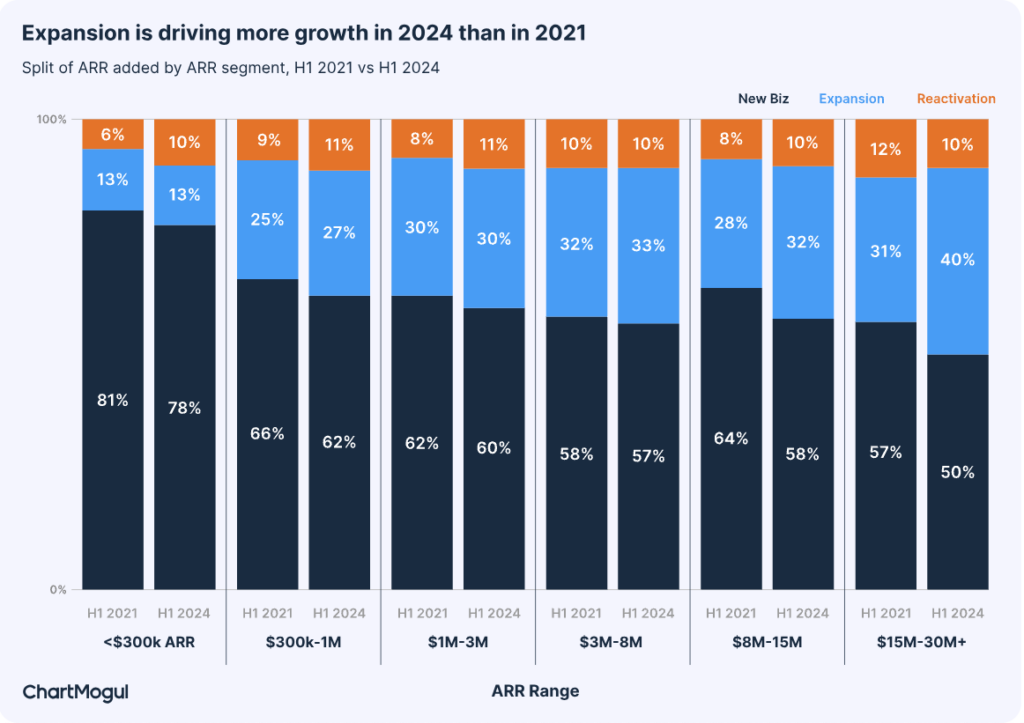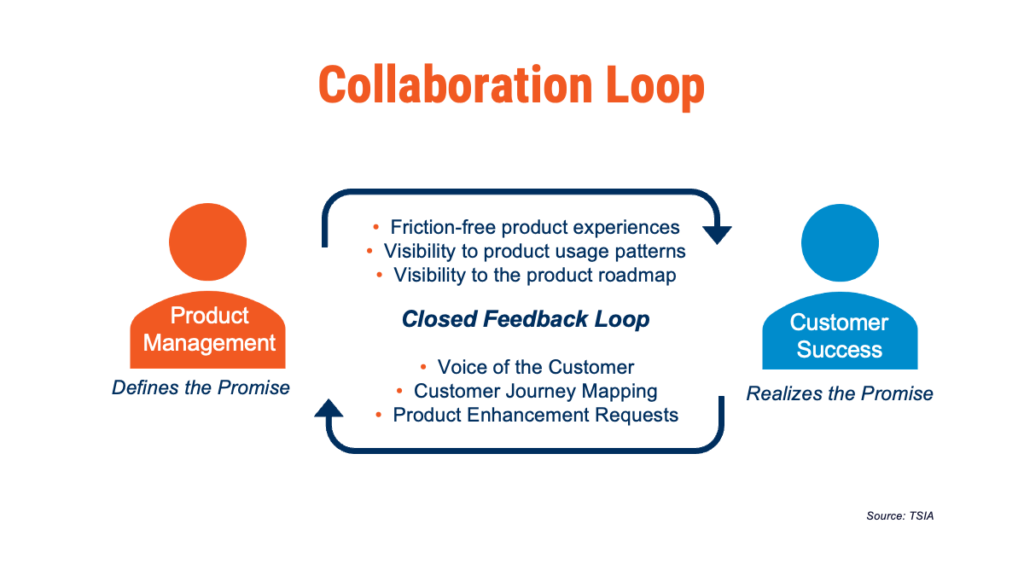A Guide to Customer-Led Growth

Businesses have been striving to deliver great customer experiences for ages. Now, suddenly, it’s being called a revolutionary growth strategy—customer-led growth.
Is it just a buzzword, or is it really something different from what we’ve been doing all along?
Let’s break down what customer-led growth is, why it’s become so important, and what you need to implement it in your company.
What’s customer-led growth?
Customer-led growth (CLG) is a strategy that focuses on driving growth by deeply understanding and meeting the needs of existing customers. Instead of prioritizing new business acquisition, CLG turns existing customers into a primary source of revenue.
CLG-driven companies achieve exponential revenue growth through retaining existing customers and expanding their accounts—and this is only possible with a stellar customer experience at the core.
To make this happen, a CLG-focused SaaS should first define what a great customer experience looks like, and then work to consistently deliver it throughout the entire customer journey.
Is customer-led growth the new PLG?
Product-led growth (PLG) is a growth strategy where the product itself is the main driver of customer acquisition, retention, and expansion. Around 58% of SaaS companies have a PLG motion in place.
Yes and no.
In terms of its potential for SaaS companies, its growing popularity, and some of the tactics involved, CLG can be compared to product-led growth (PLG). But it doesn’t really make sense to directly compare the two—they’re applied at different stages of the funnel and can actually work together.
Put simply, PLG is mostly about driving new business, while CLG focuses more on expansion.
For example, at ChartMogul, we use a hybrid model. PLG is at the core of our strategy mainly helping us fill the top of the funnel, and CLG helps us grow existing accounts and improve retention. We don’t shy away from the sales-led motion either.
We’re certainly not the only company using a hybrid approach.
“If you look at any company that’s at scale and is successful, there isn’t any one go-to-market motion that they use. It’s typically a combination of many.
PLG or a self-serve model is just one part of what they do. They also have a sales-led motion and a marketing-led motion. They also have a very strong expansion, or customer-led, motion.
The question is what sequence you do them in, and that sequence depends on your maturity and your market’s maturity.
But at the end of the day, customer-led growth has to kick in. That’s when you scale.”
Rishen Kapoor, Co-founder & CEO Toplyne
How CLG fuels SaaS growth
Whether you’re a product-led, sales-led, or marketing-led organization, you know that acquiring net new business is tough and expensive. And it’s not just you.
Since 2021, year-over-year (YoY) growth for SaaS companies has steadily declined—largely because new business sales have slowed down significantly.

Meanwhile, retention and expansion have taken on a bigger role. Companies with $15M to $30M+ ARR have seen growth from existing customers rise from 43% to 50%. In fact, retention and expansion are now driving a larger share of ARR growth across businesses of all sizes.

Clearly, there’s a need to shift focus from chasing new leads to building stronger relationships with existing customers.
But there’s something else you can see in the data. As companies grow, retention becomes less of a growth driver, while expansion takes center stage. While keeping customers is important to stay afloat, it’s expansion that drives real growth.
And if you want to drive expansion, whether through upselling, cross-selling, or increased usage, you have to drive value for your customers. In other words, you have to embrace CLG.
When is the right time to implement a CLG motion in a SaaS company?
It’s only natural to think that CLG only makes sense once you have a substantial customer base to work with. That’s why many startups focus on PLG, sales-led growth (SLG), or marketing-led growth (MLG) early on, planning to implement CLG later—usually after hitting some ARR milestone.
But the truth is, there’s no specific revenue or customer base size required to implement CLG. You don’t need to wait until you’ve “made it” to start focusing on your customers.
As soon as you have your customer journey mapped out, you can begin driving your way toward customer-led growth. The key is understanding what your customers need and delivering value at every stage, regardless of how many customers you have or what growth model you’ve been using so far.
Core components of a CLG motion
What sets CLG apart from other growth strategies? The foundations.
ICP (Ideal Customer Profile)
A huge part of why customers churn in PLG-driven or other motion-driven companies is the misalignment around what an ICP (Ideal Customer Profile) is.
A successful CLG motion starts with a laser-focused ICP, as in a deep understanding of what your customer is looking to achieve when they buy your product.
It’s true that every SaaS company should have an ICP, no matter the growth model. But in CLG-driven companies, the ICP isn’t just some document that sits untouched in a shared folder. It’s the foundation of every team’s activities, from onboarding to performance reviews to upskilling efforts.
And it’s always evolving.
So, even if you already have an ICP (and hopefully, you do), simply linking to it and calling it a day won’t cut it. You’ll need to establish a regular cadence to refresh your ICP and work together across teams, using real data and examples to create a clear and unified definition that everyone follows.
Sales and customer success alignment
For CLG to work, all go-to-market (GTM) function members have to be fully aligned, but even more so the sales and customer success (CS) teams.
From agreeing on the ICP to sharing a common vision and language, both teams must maintain close collaboration in day-to-day operations.
For sales reps, this means thinking about the ICP early in the sales process—not just focusing on hitting quotas, but on selling to customers who are likely to succeed long-term. When sales close deals with future expansion in mind, customer success is in a much better position to help those customers thrive and grow.
Feedback loop
Of course, collecting customer data is a standard practice in PLG, SLG, and MLG-driven companies. But in CLG, the focus shifts from product adoption metrics like log-ins and feature usage to the actual customer experience with your company and product.
One of the core principles of CLG is bringing the voice of the customer (VOC) into all of the company’s strategic decisions. To do this, you’ll need a solid VOC program, built on these core elements:
- Feedback collection –> an ongoing process. Use surveys, interviews, and customer success check-ins to gather continuous input from your customers, not just when there’s a major issue.
- Bringing feedback to the top. Share the insights from the VOC program with leadership and the product team.
- Closing the loop. Act on the feedback and let customers know how it’s been implemented.
- Cross-functional impact. Every department, from product to marketing and sales, should be in sync with customer feedback and implement it across every touchpoint in the customer journey.
Here we must highlight another critical interdependent relationship in your company—between the CS and product team. The collaborative effort on the VOC input is essential across your entire organization, but arguably most important to these two.

A singular data system for everyone
A unified view of customer data is what sets CLG-led organizations apart. When everyone shares the same understanding of customer goals, success metrics, and terminology, alignment across teams becomes much easier.
While each team might use its own tools, there needs to be a system where all customer experience data flows, so it’s easy for everyone to access and use.
💡 ChartMogul provides full visibility into your entire funnel by connecting CRM data with revenue insights. It helps your GTM team gauge how well they’ve grasped the ICP by tracking the entire customer journey, from first contact to ongoing expansion. With this system, everyone can access subscription revenue insights and understand how their actions impact the company’s bottom line.
How to implement a CLG motion in your company
Ready to put your customer insights front and center in guiding your company’s growth? You can already take your first steps.
Start small
You’ve already got loads of data at your fingertips. And after everything we’ve discussed, you might feel the need to dive right into cleaning and organizing that data before launching your CLG practices. But if you do it, you’ll get stuck.
Data cleaning is a never-ending task. And it shouldn’t hold up your growth.
Instead, start small. Interview, say, 20 customers to understand why they chose you in the first place. This will be the foundation of your CLG motion.
“Even the biggest businesses are still cleaning up their data. Stop waiting for perfection – start small by talking to customers and uncovering what truly drives their success!”
Edward Chiu, Co-CEO of Catalyst and Totango
Foster alignment across your GTM function
We’ve already discussed that every team should align toward your ICP. But what does it mean beyond defining your target customer and their needs?
One way to foster that alignment is through regular meetings—bi-weekly or monthly—where stakeholders from all teams gather to discuss retention, expansion, and at-risk accounts. Each team should leave with clear action steps to tackle any challenges that arise.
And don’t stop at meetings. Everyone’s day-to-day initiatives should be focused on creating a compounding effect on your customer experience.
Take marketing, for instance. Often, marketing focuses too much on acquiring new customers, which can hurt post-sales engagement. This needs to change. Marketing should be deeply involved in the entire customer journey, gathering insights that shape strategies that support expansion. Activities to consider are community building, customer education, and advocacy programs.
For sales, the goal should shift from just hitting quotas to targeting new business with a focus on the value they bring to CS. Sales teams need to understand what the post-sale customer journey looks like to set clear expectations for customers they hand off to CS.
Customer success is at the heart of managing and delivering customer impact. They should be more involved in leadership discussions, champion VOC, and continuously shape the ICP. All of this while providing the best possible customer experience, which becomes easier with cross-functional alignment.
Define your CLG success metrics
A critical piece of aligning your GTM function is creating shared key performance indicators (KPIs). While each team will have its own goals and metrics, there are a few success metrics that should be on everyone’s radar, as they reflect the impact of your CLG motion.
Here are four to begin with:
Product adoption metrics refer to key product usage indicators like activation rate, feature usage, and time to value (TTV). These metrics show whether customers understand your product and know how to get value from it.
Customer success qualified leads (CSQL) are leads identified by your customer success (CS) team as having potential for upsell or expansion based on their usage, engagement, or success with the product. These are customers who are thriving with your product and ready to buy more. While it’s usually account managers who handle CSQLs, those are usually a result of a joint effort across departments.
Net Retention Revenue (NRR) measures how much revenue your company retains and grows from existing customers over a period of time, factoring in both expansion and churn. High NRR means your customers are sticking around and spending more with you, which is the ultimate goal of a CLG strategy.
Expansion revenue tracks the additional revenue generated from existing customers through upselling, cross-selling, or renewals.When it comes to financial KPIs, ChartMogul is your reliable partner. Track the effect of your CLG motions on your bottom line with ChartMogul’s detailed reports on your subscription revenue and all the factors contributing to it. Start monitoring your expansion revenue with ChartMogul today.


